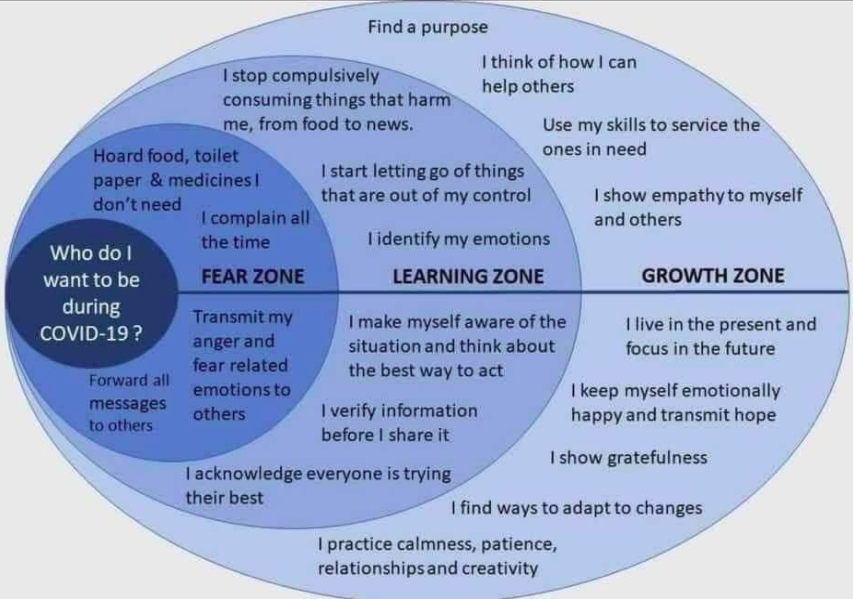By Pete Quinn, Independent HE Consultant focusing on managing equality, diversity & inclusion.
Most tutors have a paradoxical tension that they need to manage now: providing direction, guidance and reassurance to their students while acknowledging that the path ahead isn’t clear. Doing one thing without the other doesn’t work. Both are needed to help students find the clarity and strength to move forward.
As a tutor you are also adapting to this new way of working. Your initial approach may have been to create an email auto-reply listing each and any online support available but *now* is the time to engage with your students, show you care and offer direction and guidance.
So how are you adapting and can you share your progress with your
students?


I usually find having a visual overview (image above) helps me work out where I am in a process. As I write this I am in the ‘Growth Zone’, but I can easily move between the ‘Learning’ and ‘Fear’ aspects in the visual explainer. This might help your students orient where they are at. You cannot provide certainty but you can provide direction.
To offer guidance and reassurance you will want clarity on what your students are worrying about.
Proactive approaches
Last week I saw that a former colleague had polled 600 of his returning students on how they were doing and published the results. It was a brilliant way of quantifying how students were, what they were worried about and suggesting ways of addressing these worries. This was an excellent example of a proactive approach.
Surveying 10,000 students in the UK NUS reported that most students were worried about finances, employability, their mental health and academic performance.
So what can you do as a tutor to offer direction and guidance?
- Crisis communications usually mean en masse emails or tweets. If you haven’t been in touch with your students with a short, ‘Are you okay?’ message than do so now.
- Offer a zoom/teams/google meeting which several students at a time can join if they wish. Advertise this opportunity to make clear:
- When you can be available.
- Reminding students of two self-care resources (listed on your Uni’s Student Support website).
- Recommend they take a few minutes and learn about support or advice teams at the University for when they or their friends might need them.
- Tell your students that using self-help via Blackbullion or a wellbeing platform such as the Big White Wall is something successful students tend to do.
- If you are short of time, focus on your disabled students. Crisis responses to date have not included enough thinking about the students who need this focus the most.
- Ask what they need and how you might provide it.
- Find out what barriers these students are encountering.
- Make sure you are using accessible resources in your teaching and learning including:
- subtitling in videos or lectures you share.
- readable PDFs.
- provide overview material of lectures in advance.
- Last, but not least, look after yourself. Use your University Employee Assistance Programme if you are experiencing stress, financial concerns, mental health challenges or want ideas about how you can help yourself to thrive.
There is a lot of evidence to show modelling self-care is a powerful example that helps influence more positive well-being in others. Even if you are being unclear that uncertainty is normal for everyone at the moment, this could make a big difference.




